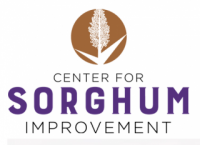CSI Seminar Vincent Vadez, Nov 11 at 9 AM CT
The Center for Sorghum Improvement (CSI) will host a virtual seminar by Dr. Vincent Vadez, Crop Physiologist and Agronomist for the French National Research Institute for Sustainable Development (IRD), on Tuesday, November 11 at 9:00 AM CT. His talk, titled “Transpiration efficiency and response to high sowing density: Two connected opportunities for yield improvement in sorghum,” will focus on his team’s work researching genotypic variation in sorghum’s transpiration efficiency (TE) and response to evaporative demand and planting density and its link to canopy architecture traits, such as such as leaf erectness and vertical leaf distribution.
The abstract of Dr. Louis’ presentation is provided below:
Sorghum is a C4 crop, hence is equipped with physiological mechanisms conferring it a natural capacity for a higher water use efficiency than many other crop species. Valdez will present results showing diversity in the transpiration efficiency (TE, biomass/water transpired over time) and in the transpiration response to the evaporative demand (proxied by the vapour pressure deficit, VPD) of sorghum genotypes. Results showed a link between a restricted or low response of transpiration to VPD and TE measured under terminal drought conditions. Because higher TE was also linked to yield increases, these results led to the inclusion of high TE lines into several breeding schemes. More recent results showed genotypic diversity in the capacity to respond to an increase in sowing density. Interestingly, the positive response to density appeared to be closely linked to an increase in TE, i.e. genotypes showing strong TE increases also show a strong positive response to higher sowing density. In addition, genotypes with highest TE also display the largest increases in transpiration under high evaporative demand. Other results showed that high field sowing density decreased the VPD inside the crop canopy. Genotypes with the highest TE under high density also allowed the most light to penetrate the field canopy. Measurements of 3D architecture traits with a 3D laser scanner showed plant propensity to respond positively to a high sowing density was linked to more erected leaves, to a distribution of the leaf area in the vertical axis favouring the bottom part of the canopy, and to a fuller leaf coverage of the ground. Altogether, these results open new opportunities to improve yield in sorghum, in the short term by promoting higher sowing density with existing cultivars having the propensity to a positive response, and in the long term by breeding canopy traits that promote together higher TE and response to denser stands.
For information on this and future seminars visit the CSI seminar webpage.


